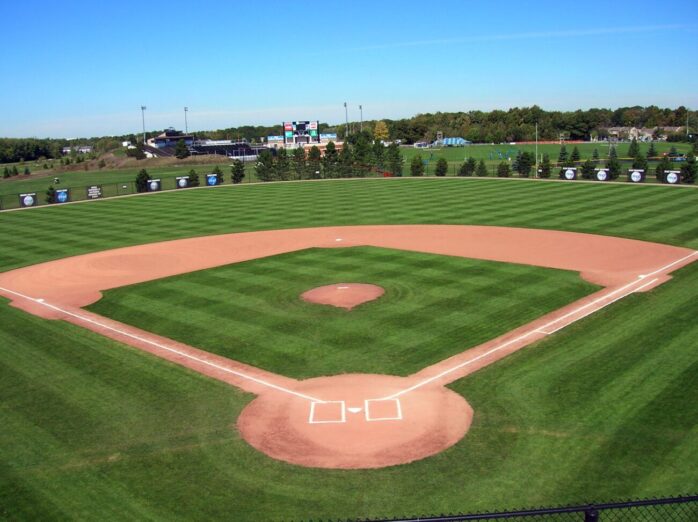
Although maintaining a baseball field might be a lot of work, it is a worthwhile task that isn’t as difficult as you may think. With the right maintenance schedule and planning, you will be blessed with a pristine, effective infield throughout the season. This guide is the ideal place to start if you’re searching for ways to keep your baseball field in peak condition.
Mowing Tips
Use the 1/3 rule to ensure that you never cut over 1/3 of a grass leaf blade at once. Depending on the characteristics of the field, you should increase your mowing level if you remove more than one-third of the blade length. During the growth season, boost your weekly cutting schedule to two or three times, and mow while the field is dry to help prevent grass clumping, and to get a superior cut. Proper maintenance of your space and tools will go a long way to help finish the job painlessly. Invest in a good mower, like a zero-turn mower that can complete tasks more quickly, enabling you to increase the frequency of mowing and taking much of the chore out of it.
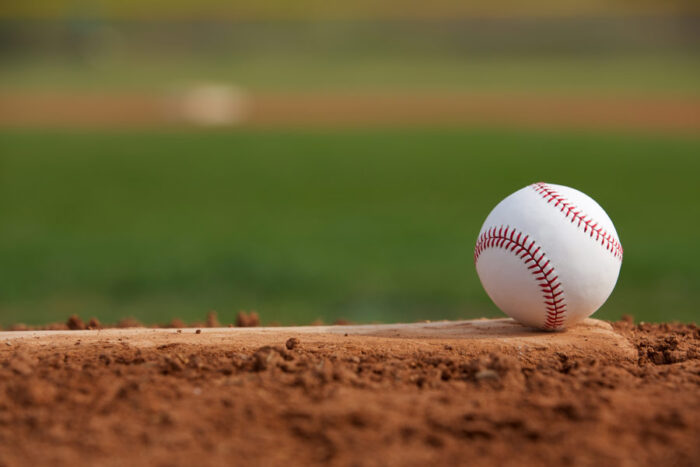
Clay Use
Clay could be extremely helpful in supplying a stable and safe playing area year-round. Clay should be packed into the catcher’s box, batter’s box and throwing mound using simple hand tools such as hand tamps, rakes, shovels, or brooms. To make sure you are keeping within official regulations, always check the most recent league rules, guidelines, and regulations when planning this kind of maintenance. Once your clay is packed in, cover any patches with a thin coating of calcined clay and keep it covered. Clay can minimize the holes from appearing and give players a much better playing surface in heavy-use areas. Make sure to inspect and repair any spaces that may need attention after every game day to keep it in tip-top condition.
Grooming
The surface of the diamond is groomed to make it playable and to give it a polished appearance, and regular grooming with the right tools, such as drag mats and groomers, is essential for proper maintenance. However, keep in mind that grooming should only be performed after leveling is complete. Before grooming, remove the bases and seal every opening with some kind of plug to keep debris from filling any openings for an easier time. After “scarifying” the ground using a nail drag to effectively break up dense, tough infield soil, continue mowing the area with a drag mat or brush. Raise the drag mat and clear off any extra soil when you get a few feet from the outfield. Lastly, groom the infield’s back radius, home plate zone, and base pathways using a hand rake.
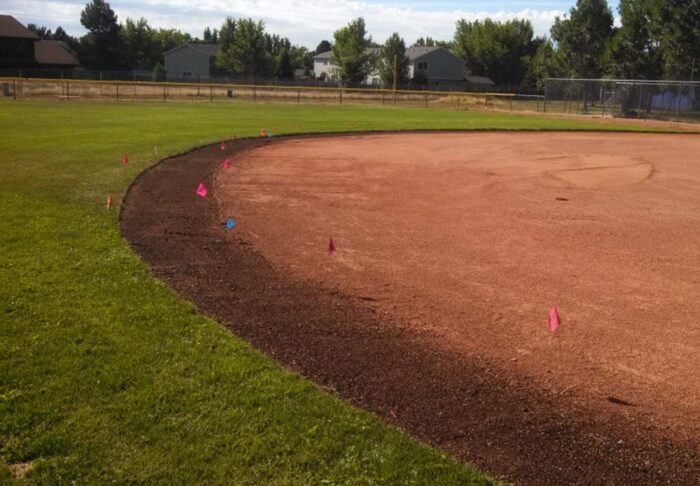
Practice Good Rake and Drag Techniques
The growth of a grassy rim on the edge of an infield can be reduced by using effective raking and dragging techniques. Never rake into a grassy edge and try to avoid dragging infield dirt through to the grass edge. Keep a minimum of a foot from the edges of the grass when dragging the field. This will lessen the quantity of infield debris that lands on grass edges. In this regard, old-school methods have been shown to be better overall as a motorized field drag is often less efficient than hand tools. The tools you will need for effective infield maintenance include a screen drag, infield leveling rakes, and a nail drag. A hand screen drag is best used on the warning track and the infield skin. A hand rake is better used on the infield cutouts, baselines, home plate, and pitching mound.
Drying the Infield Skin
Maintaining the proper gradient on an infield skin will ensure standing water is able to drain down, which will significantly enhance drainage. The infield skin will eventually develop low spots as a result of play and wear and tear, causing water to pool. Aim to clear away as much standing water as you can before fixing any damage. Puddle pillows are a useful method to help soak up this water. Put the pillows in the watery area so that they can quickly absorb it. Repeat the process until most of the standing water is gone. To absorb the last of the water, use calcium carbonate and avoid anything marked rapid dry.
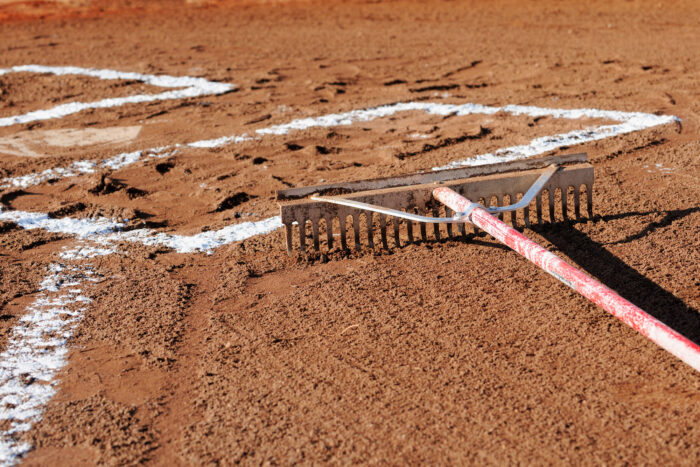
Maintain Grass Edges
Edging is crucial to the upkeep of a baseball field. The correct upkeep of a field’s grassy margins can be beneficial to both player safety and good play out on the field. Regular edging will prevent seams from developing and help maintain the field’s crisp appearance. Use a tiny, mechanized edger, a manual loop edger, a string line, a rake, and a scoop spade to keep the edges of the grass pristine. After using the mechanical edger to create straight lines throughout the whole infield, set up the string line as a trimming guideline. Then make a few small mounds of rubbish to remove using the scoop shovel. Maintaining grass borders on a baseball field on a biweekly basis is the best practice to keep your fields looking perfect.
Preparing the Infield Before a Match
Environment and existing circumstances are the only factors that go into deciding how to prepare an infield skin. Depending on whether the field is wet or dry, different methods should be used, and the success of the day’s game will depend directly on if you can maintain the correct moisture levels. Rolling and watering an infield that has been properly maintained helps to compress the ground and keep it together throughout a game. Rolling causes compaction and water acts as an adhesive to hold the soil together and minimize dust. Since each scenario is unique, infield control to this degree is not always practical. Use water to the best of your ability if you have access to it to keep the dirt at bay and your infield ground firmly in place.
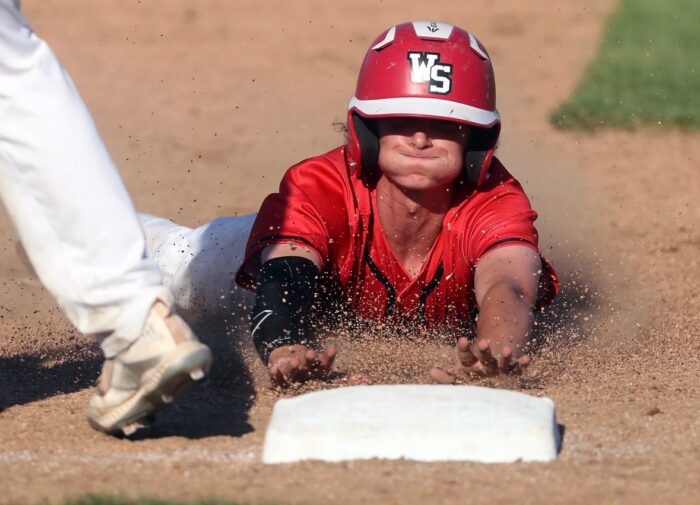
Aesthetics, playability, and safety are the main factors to be taken into account when maintaining a baseball field. Each region of the field has unique maintenance needs for playability, and all fencing, seating, and other constructions need to be safe for use above all else. Due diligence is necessary to properly maintain a pristine baseball field, and both spectators and players will appreciate the effort put into some of the stunning fields around the country.







